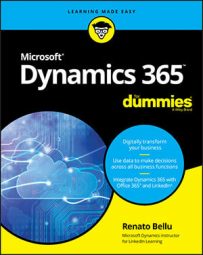Just take a look at the components of Dynamics 365:
- Computing Power: Microsoft is a leader in cloud computing.
The Azure Cloud is a planet-scale public cloud which rivals any other provider’s cloud services as far as coverage, security, resources, and capabilities goes. Dynamics 365 runs on Azure. Competing products often must rely upon some other company’s cloud infrastructure.
- Database: Microsoft is a leader in database technology.
The Azure SQL Database is essentially the same leading database product that acts as a widely adopted standard for business applications — the Microsoft SQL Server relational database management system (RDBMS). This is the same database that Dynamics has run on for many years, but now the Azure SQL version of SQL Server is optimized for the cloud, which means it has elasticity which allows it to grow as your business grows. Most competing ERP and CRM products also run on Microsoft’s SQL Server database; so they must rely on Microsoft, but not the other way around.
- Customer Engagement: Microsoft is a leader in CRM.
Dynamics CRM Online is now Dynamics 365 for Customer Engagement; this is the same popular and very widely adopted leading CRM package, but now with more connectivity to the Dynamics ERP offerings (AX and NAV), standard reporting tools (such as Power BI), point-and-click customization tools (such as PowerApps), and more connections to other cloud services (such as Google, Amazon, and more). Dynamics 365 for Customer Engagement (CRM) has expanded the traditional CRM capability of organizing and tracking communications with contacts and prospects to automate the sales cycle, to include applications not only for sales force automation but also for customer service, marketing automation, field services, project service automation, and HR talent (applicant tracking and on-boarding).
- Finance and Operations: Microsoft is a leader in ERP.
With two distinct cloud ERP applications to choose from, Microsoft has your SaaS accounting software requirements covered with Dynamics 365. For larger (enterprise or mid-market) organizations with more extensive requirements there is Finance and Operations (formerly Dynamics AX) and for mid-sized to small organizations there is Business Central (formerly Dynamics NAV). Both Finance and Operations and Business Central are full-featured, full-blown ERP systems with general ledger, budgeting, accounts receivable, accounts payable, inventory control, sales order processing, purchase order processing, manufacturing, and more.
- Common Data Model: Microsoft is a leader in business intelligence.
The Dynamics 365 applications are built upon the Microsoft Common Data Model. This means your development efforts for data integrations, custom reporting, and custom applications can leverage a shared data architecture. You can extend Dynamics 365 in innumerable ways, but all the extensions will be pointing to a shared set of standard entities, so that a change to one of the entities (such as adding a new field to the inventory record) will be automatically reflected everywhere. The code inheritance and code re-use inherent in using a common data architecture can both speed up development and reduce the cost of maintaining your customizations.
- Office 365: Microsoft is the standard in office suite software.
Microsoft is the standard for spreadsheets (Excel), word processing (Word), email (Outlook), presentations (PowerPoint), and more. Office 365 integration in Dynamics 365 is bi-directional and extensive. You can receive emails in Outlook and see the sender’s information from Dynamics 365 for Customer Engagement (CRM) on a pane that appears to the right of the email you are reading. This kind of convenience saves you from having to toggle between applications, or cut and paste data, or laboriously attach and re-attach files. What you do in Outlook is reflected in Dynamics 365 applications and vice versa. Dynamics 365 includes an unprecedented level of integration with not only Outlook, but also with Excel and other Office 365 applications.
- SharePoint: Microsoft is a leader in document management.
Chances are that organizing your documents on SharePoint is already an established way to collaborate on projects at your organization or to distribute marketing collateral, knowledge base articles, periodic reports, and more to teams inside and sometimes outside of your organization. Dynamics 365 is connected to Office 365 SharePoint, making it easy to distribute Dynamics 365 reports and other information on SharePoint.
- LinkedIn: Microsoft is a leader in professional networking.
Microsoft’s LinkedIn is the number one professional networking website in the world. LinkedIn has become the de-facto way for business professionals to reach out to one another, find opportunities, and match requirements with people.

